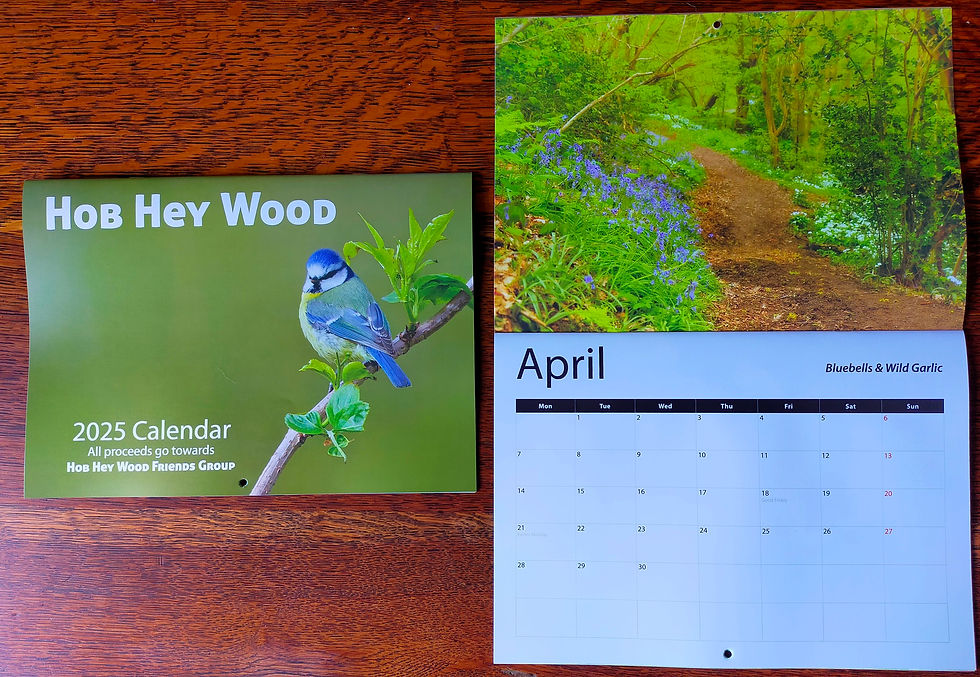Going Batty in Hob Hey Wood!
- Mark O'Sullivan

- Sep 30, 2018
- 2 min read

As ancient semi-natural woodland, Hob Hey Wood contains a large number of mature trees. As trees age, they can become ‘holey’ ideal conditions for bats to roost in. We decided to try and find out whether there were any bats present, and of which species. Cheshire holds 11 of the 18 species of bat in the UK so we had a chance of encountering several species.
Over several nights, my wife and I and the grandkids went out to Hob Hey Wood looking for bats using a bat detector (more on this below). We got down to the wood as it was getting dark, and walked slowly through the wood, with the bat detector on.

Soon enough a chirping noise from the bat detector announced that there was a bat somewhere near! The sound got louder and louder, the graph on the detector got bigger and bigger, yet we could see nothing! This happened again and again. It was a really eerie feeling, watching and listening to the bat detector telling us we were surrounded by bats, yet not seeing anything at all.

In the wood, we detected three species of bat: common pipistrelle, soprano pipistrelle, and brown long-eared bat. We decided to move to the ‘bottom’ of the wood, near the river where we could observe the wood from outside and see the river.
The bats here were not shy: pinging calls on the detector were accompanied by the sight of bats rushing over our heads, only feet away! The girls loved it.
Watching the river we saw bats flitting along just inches above the water. The bat detector pinged: Daubenton’s bats! Our fourth species and the one that gave the most spectacular views.
There were tantalising recordings of other bat species that we’ve not confirmed yet so we’re going to visit again and see what else Hob Hey Wood contains.
Echolocation and bat detectors
Bats hunt by echolocation: firing high pitched sound waves in front of them and timing how long it takes to return. That time can be used to determine where an object is. Bat calls are so high pitched that they cannot usually be heard by humans. A bat detector takes these high-frequency noises and converts them into sounds we can hear.
Since different bats emit different frequencies in different ways, their echolocation calls are diagnostic. A bat detector can identify bats from their sounds.
The bat detector we used was the Wildlife Acoustics echo meter touch 2. This is a small module that connects to a mobile phone or tablet to display the bat’s sonogram and play the converted sounds. If you want to know more about this detector, email hobheywood@gmail.com
If you want to know more about bats, contact the Bat Conservation Trust:
Cheshire has its own bat group. The website is here:
Bats and their roost sites
It’s a sad fact that, in the UK, bats have declined significantly over the past few decades. Roost sites are important, therefore, and Hob Hey Wood appears to hold significant numbers. Imagine the impact if woods like Hob Hey were to be lost; the bats would have nowhere to live. Another reason Hob Hey Wood is so important.




Comments